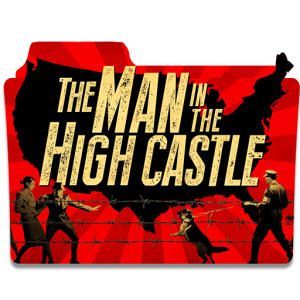
It’s no surprise that the advertisement campaign done in late 2015 for a then upcoming Amazon Studios’ series was considered a provocation and had to be ended prematurely due to general outrage. Posters of the Statue of Liberty with its right arm changed to a Hitler salute were hung in New York subway trains above seats changed to spot Nazi-inspired insignia. One may or may not consider that tasteless, but it does the trick by pulling viewers into the uncanny world of The Man in the High Castle.
The year is 1962. But not ‘our’ 1962: Nazi Germany and Imperial Japan are the most powerful countries in the world fifteen years after the Axis Powers won World War II and shaped a world to their liking. The former United States of America has been split up into the Japanese Pacific States in the West and an East that is part of the Greater German Reich.
This is the dystopian set-up of Amazon Studios’ recent series adaptation of Philip K. Dick’s novel The Man in the High Castle (1963). Initially, the show focuses on Juliana Crain (Alexa Davalos) and her boyfriend Frank Frink (Rupert Evans), who live in Japanese-controlled San Francisco under rough conditions and vacillate somewhere between resignation and adaption. But then Juliana gets unintentionally involved with the Resistance and finds a mysterious film reel showing confusing pictures from … somewhere else. The volatile film seems to be as important to the Resistance as it is to the government, and Juliana takes on her uncertain mission.
As the story progresses, it becomes obvious that The Man in the High Castle is told from several perspectives:
- the 27-year-old American, Joe Blake (Luke Kleintank), who wants his country back
- the New York family father and SS-Obergruppenführer John Smith (Rufus Sewell), who not only passionately believes in and praises what he calls a “better world” but is also willing to do everything to crush those who “seek to drag us all backward”
- the well-meaning Trade Minister of the Pacific States of America, Nobosuke Tagomi (Cary-Hiroyuki Tagawa) and the doubt-filled Nazi official, Rudolph Wegener (Carsten Norgaard), who are both trying to preserve a fragile peace between the so-called allies, Japan and Germany, which actually are in a state of cold war.
This multi-perspective presentation is one of the strengths of The Man in the High Castle and makes it a remarkably deep story of good versus evil, but without limiting itself to a conflict between round good characters and flat evil ones. Also, the implied situation that there are Americans – many forcibly, but some more than eagerly – taking their place in the new regime is provocative, but not out of place.
History buffs may also be thrilled by the many pieces of information casually thrown in that indicate several points of historical divergence from ‘our’ reality. Also plot-wise the show offers a row of subtle hints that may be easily missed. This way the plot and the overall eerie atmosphere create a world rich in detail in which viewers wouldn’t want to live in but are compelled to watch. The mysterious pieces of information presented create a sense of urgency to figure out what’s going on and how everything will to fit together in the end.
Speaking of ends: The first season ends with an open one, and a second season has been confirmed for release in late 2016. Until then, take a look into this Grave New World …
https://www.youtube.com/watch?v=hzz_6dmv03I
20,686 Total Views, 4 Views Today






